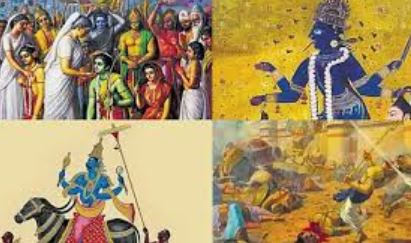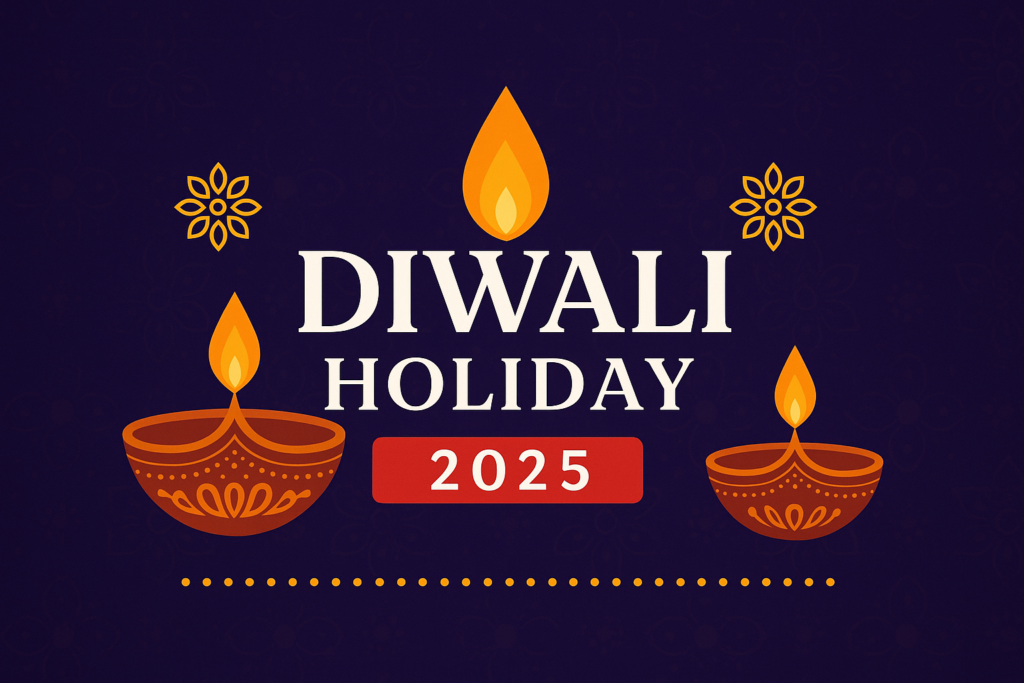🪔 Diwali Dates & Key Info (2025–2028)
| Year | Main Diwali Date | Day | 5-Day Window | Notable Features / States Celebrating Prominently | Remarks / Other Details |
|---|---|---|---|---|---|
| 2025 | October 21 (Tuesday) | Tuesday | Oct 18 – Oct 23 | Across India | Date sometimes debated (20 vs 21) due to lunar tithi overlap |
| 2026 | November 8 | Sunday | (± 2 days around) | Across India | Based on lunar calendar cycles |
| 2027 | October 29 | Friday | — | All major states | Follows pattern of shifting earlier in October/November |
| 2028 | October 17 | Tuesday | — | All major states | Continues trend of mid-October timing |
- 🪔 Diwali Dates & Key Info (2025–2028)
- Introduction
- Historical & Mythological Origins
- Spiritual & Symbolic Significance
- The Five Days of Diwali (2025 Scenario & General Pattern)
- Regional Variations & State-Wise Highlights
- Rituals, Customs & Traditions
- Food, Sweets & Culinary Traditions
- Eco-Friendly & Modern Trends
- Safety & Health Tips
- Conclusion
Introduction
Diwali — also known as Deepavali or the Festival of Lights — is one of the most widely celebrated and cherished festivals in India. It is a time when homes glow with rows of diyas (oil lamps), streets come alive with rangoli designs and fireworks, and families come together in prayer, feasting, and joy.
Beyond its festive sparkle, Diwali is deeply symbolic — it represents the triumph of light over darkness, knowledge over ignorance, good over evil. Though rooted in Hindu tradition, Diwali is also observed by Jains, Sikhs, and some Buddhist communities, each with their own interpretations and customs.
In this article, you’ll find a comprehensive guide to Diwali: its historical roots, spiritual significance, the rituals across its five days, regional variations, modern shifts like eco-friendly practices, and much more. Let’s begin the luminous journey.
Historical & Mythological Origins

a) The Ramayana and Return of Rama
One of the most popular legends associated with Diwali is from the Ramayana. After defeating Ravana and rescuing Sita, Lord Rama returned to his kingdom, Ayodhya, following 14 years of exile. To celebrate his return, the people of Ayodhya illuminated the city with countless oil lamps. This act is often commemorated through the lighting of diyas across homes during Diwali.
b) Krishna, Narakasura, and Liberation
In other regional tellings, Diwali commemorates Lord Krishna’s slaying of the demon Narakasura, who had terrorized the gods and people. His victory is celebrated as the liberation from tyranny and darkness. This story is especially emphasized in south India and parts of western India.
c) Lakshmi, Kuber & Wealth Legends
Another narrative is tied to Goddess Lakshmi, the deity of wealth and prosperity, who is believed to visit homes on the night of Diwali (Amavasya) and bless devotees with abundance. Kubera, the treasurer of the gods, is also worshipped in some traditions.
d) Jain, Sikh & Buddhist Connections
- Jainism: Diwali marks Mahavira’s nirvana (attainment of moksha).
- Sikhism: Diwali coincides with Bandi Chhor Divas — a celebration of Guru Hargobind’s release from imprisonment, where he also ensured that other captive kings were freed with him.
- Newar Buddhists in Nepal celebrate Tihar, which overlaps with Diwali, celebrating lights, crows, dogs, and cows in sequence of days.
Thus, Diwali is not just a festive fairytale, but a tapestry of stories, layered with meaning across traditions.
Spiritual & Symbolic Significance
a) Light vs Darkness & Inner Journey
At its heart, Diwali is a metaphor — lighting a lamp is a symbolic act of illuminating the inner self, dispelling ignorance, and invoking positive energy. People clean and decorate their homes to prepare the space for goodness and prosperity.
b) Purification and New Beginnings
It is common to deep-clean homes, discard old clutter, and perform pujas before the festival begins. This physical cleansing mirrors the spiritual act of shedding negativity. Many also start new ventures, open new account books (Chopda Puja in business communities), or begin fresh on this auspicious occasion.
c) Worship & Devotion
On the main Diwali night, devotees perform Lakshmi Puja, often combined with worship of Lord Ganesha (the remover of obstacles) and Kuber (the deity of wealth). Prayers include aarti, mantra chanting, and offerings of sweets and flowers.
d) Charity & Community
Another dimension of Diwali is dana — giving to the needy. Many people distribute food, clothing, or donations during this season, underlining the festival’s spirit of sharing and social solidarity.
The Five Days of Diwali (2025 Scenario & General Pattern)
Below is the typical flow of the five days, with 2025 as an example year.
Day 1 — Dhanteras (Dhantrayodashi)
Date (2025): October 18, Saturday
Believed to be auspicious for buying metal items, gold, silver, and utensils to bring prosperity. Homes are cleaned, lit with diyas, and prayers to Dhanvantari (god of health) are conducted.
Day 2 — Naraka Chaturdashi / Choti Diwali
Date (2025): October 20, Monday
Also called Kali Chaudas or Roop Chaudas. The legend of Narakasura’s defeat is commemorated. Early morning ritual bath (oil bath before sunrise) is common. Homes are decorated with minimal lighting in some regions.
Day 3 — Lakshmi Puja / Main Diwali Night
Date (2025): October 21, Tuesday
This is the principal Diwali day. After sunset, Lakshmi Puja is conducted during the Pradosh Kaal (evening time). Homes are brightly lit, rangolis are drawn, firecrackers are burst, and houses are open with joy and hospitality.
Day 4 — Govardhan Puja / Annakut / Bali Pratipada
Date (2025): October 22, Wednesday
In many parts of North India, this day is marked as Govardhan Puja, celebrating Krishna’s lifting of Govardhan Hill to protect his devotees. In some southern and western regions, it is Bali Pratipada / Annakut, symbolizing the return of King Bali. Wikipedia+1
Day 5 — Bhai Dooj / Bhaiya Dooj
Date (2025): October 23, Thursday
This day is dedicated to sibling bonds. Sisters pray for their brothers’ well-being, and brothers gift them something in return. The ritual often involves tilak, sweets, aarti, and symbolic gestures of protection.
Note: Slight regional variations may shift naming or the sequence, but broadly, the five days retain their significance across India.
Regional Variations & State-Wise Highlights
While the core elements of Diwali remain consistent, each region in India adds its own flavor:
a) North India
In states like Uttar Pradesh, Delhi, Bihar, and Punjab, Diwali nights are marked by spectacular fireworks, large family pujas, and community celebrations. Many families conduct Kali Puja (especially in Bengalic tradition but also overlapping).
b) West India (Gujarat, Maharashtra, Rajasthan)
In Gujarat, Diwali also marks the beginning of the new year (Vikram Samvat). Business communities perform Chopda Pujan— worship of new account books. In Maharashtra, Govatsa Dwadashi (worship of cows and calves) is observed a day before Dhanteras.
c) South India
In Tamil Nadu, Andhra Pradesh, Telangana, and Karnataka, the festival has a stronger emphasis on Naraka Chaturdashi — the “Choti Diwali” is often more prominently observed, with ritual baths at dawn. Also, homes are decorated with kolams (rangoli).
d) Eastern India
West Bengal and Odisha observe Kali Puja on Diwali night, worshipping Goddess Kali instead of Lakshmi. In Assam and other states, the festival may coincide or overlap with local traditions.
e) Overseas Celebrations
Indian diasporas in the USA, UK, Singapore, Malaysia, Fiji, Mauritius etc., organize grand cultural Diwali nights with lanterns, dance performances, community prayers, and feasts. Diwali is even gaining recognition as a public holiday in certain U.S. states.
These regional flavors make Diwali a tapestry of cultural unity, where the same core festival is celebrated in diverse ways.
Rituals, Customs & Traditions
Lighting Diyas, Lamps & Candles
The act of lighting clay lamps or LED lamps (for eco-friendliness) around homes, courtyards, and balconies symbolizes the victory of light over darkness.
Rangoli & Decorations
Colorful rangoli patterns made with rice flour, colored powders, or flower petals are drawn at entrances to welcome guests and positivity. Doorways are often adorned with torans (mango leaf or floral hangings).
Worship & Prayers
On the night of Diwali, families perform Lakshmi Puja along with Ganesha Puja and sometimes Kuber Puja. Offerings include sweets, fruits, incense, oil, and symbolic items like coins or grains.
Exchange of Gifts & Sweets
Exchanging traditional sweets (ladoos, barfis, kaju katli, gulab jamun) and gifts strengthens bonds. Many families make gift hampers for friends, neighbors, and even colleagues.
Fireworks & Crackers
Bursting crackers is widespread, though in recent times many are switching to eco-friendly or “green crackers” to reduce pollution and noise.
Fasting & Vrats
Some devotees observe partial fasts (e.g. until Lakshmi Puja) or maintain certain dietary restrictions.
Charity & Community Meals
As part of daan, many distribute sweets, food, or essentials to the needy. Community feasts or Bhandara are held in temples to feed large numbers.
Food, Sweets & Culinary Traditions
No Indian festival is complete without its delicacies. During Diwali:
- Sweets (Mithai): ladoo, barfi, kaju katli, jalebi, gulab jamun, mysore pak
- Savories / Snacks: samosa, chakli, namak pare, murukku, chevda
- Many households prepare these at home to maintain authenticity and aroma
- In modern times, fusion sweets, handcrafted gift boxes, and online orders have surged
- Sharing sweets with neighbors and friends is customary
Eco-Friendly & Modern Trends
As awareness grows, many are adopting “Green Diwali” practices:
- Use of LED diyas or solar lamps instead of oil lamps
- Biodegradable decorations like paper lanterns, eco rangoli materials
- Preference for noise-free or light crackers
- Digital greetings, e-cards, and virtual pujas (especially since the post-pandemic era)
- Community initiatives like planting saplings, cleanliness drives, and waste management during festivities
- Online shopping for festive goods, digital gift cards, and eco packaging
These changes reflect a conscious effort to balance celebration with environmental responsibility.
Safety & Health Tips
To ensure a joyous, safe Diwali:
- Use cotton clothes instead of synthetic fabrics when bursting crackers
- Keep a bucket of water or fire extinguisher nearby
- Supervise children carefully
- Use only certified crackers and maintain distance
- Avoid smoking or excessive alcohol during celebrations
- Be mindful of air quality and try to limit firecracker bursts
- Check Pujo timings (muhurat) to perform rituals in auspicious windows
Conclusion
Diwali remains one of India’s most beloved festivals — a celebration that lights up not just homes, but hearts. It’s a time of prayer, joy, togetherness, and renewal. Whether you follow ancient traditions or embrace modern twists like eco-friendly practices, the essence of Diwali is universal: light over darkness, hope over despair, and goodness over evil.
May this Diwali 2025 bring prosperity, peace, and positivity to you and your loved ones. Happy Diwali!



